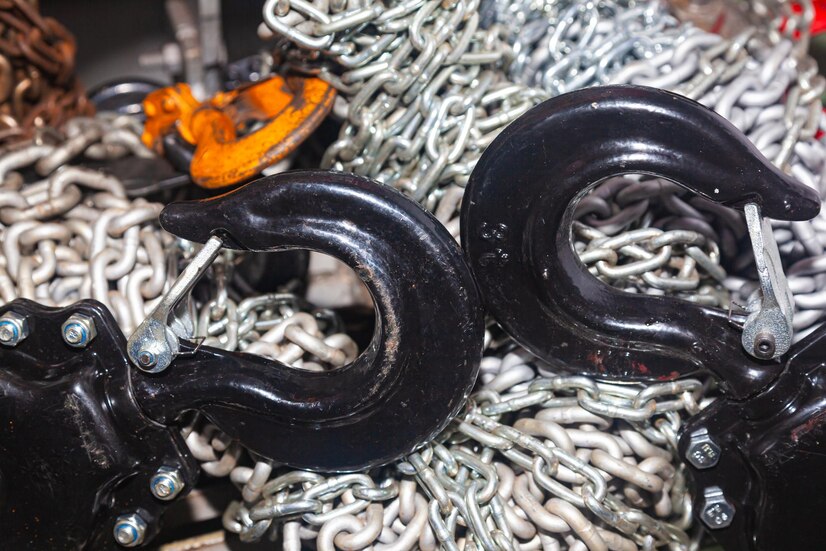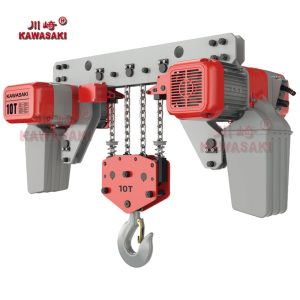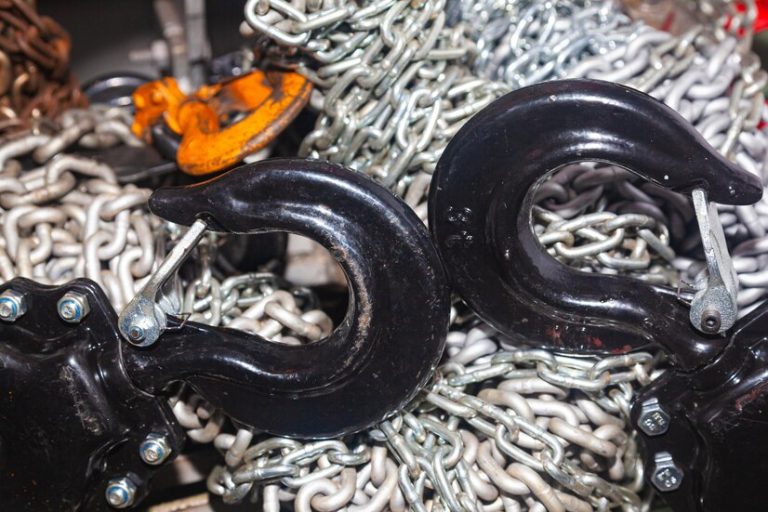Calculating loads plays a role in guaranteeing the safety and effectiveness of lifting tasks involving chain hoists. Experts, in the field need to appreciate the importance of calculations and how they impact load handling directly. This procedure includes aspects such as determining the weight of the load assessing both static forces and understanding safety guidelines especially when operating a 1-ton electric chain hoist. The goal of this article is to offer a manual for mastering load calculations, for electric chain hoists.
Understanding Load Calculations for Electric Chain Hoists
The Importance of Accurate Load Calculations
It is crucial to make load calculations to protect both individuals and the machinery during lifting tasks. An inaccurate evaluation could cause overloading issues which might lead to equipment malfunctions or accidents occurring. The success of your operations relies on understanding if the selected hoist is capable of managing weights and loads. Utilizing a precise load calculation method is particularly important when using a 1-ton electric chain hoist to guarantee performance and safety.
Basic Concepts in Load Calculation
Calculations, for loading primarily center around ideas such as mass measurement and safety precautions to be taken into account while lifting objects using a hoist system, like the 1-ton electric chain hoist.
Steps to Calculate Hoist Load
To accurately determine the weight that can be lifted it’s important to follow a process. These are the measures you should take into consideration.
Identifying the Weight of the Load
When calculating the load capacity, for 1-ton electric chain hoists the first important step is determining the weight of the load being lifted. This involves considering not only the weight but also any extra components like rigging gear or attachments linked to the load. It’s crucial to know the weight as it allows the hoist to function safely within its limits. Remember to take into account factors such, as the weight of hooks slings or any additional equipment that adds to the load.
Determining the Effects of Dynamic and Static Loads
Next, you should look at how your load behaves during lifting. Dynamic loads differ from static loads, as they may induce forces that change based on movement or inertia. It’s essential to consider these factors as they can significantly affect your calculations. For your 1-ton electric chain hoist, make sure to account for anticipated movements or impacts the load may experience during lifting.
Understanding Sling Angle and Its Impact on Load Capacity
The angle at which the sling is attached is crucial when calculating the load’s weight distribution while lifting using a device, like your 1-ton electric chain hoist, and may affect the weight it can hold significantly by increasing it beyond its capacity, with a narrower angle.
Safety Factors to Consider
It’s crucial to prioritize safety when determining hoist loads by incorporating a safety factor to account for factors and uncertainties, in the calculation process. Safety factors typically range from 5 to 10 times the load weight. When operating a 2,t000 pound electric chain hoist it’s important to follow safety guidelines and make sure your load calculations allow for errors that might jeopardize safety during lifting tasks.
Specialized Considerations for 1-Ton Electric Chain Hoists
When dealing with a 1-ton electric chain hoist, in particular, it’s important to take into account its features and qualities.
Specific Characteristics and Features
An electric chain hoist, particularly in the 1-ton category, typically comes equipped with advanced safety features, powerful motor capabilities, and versatility to handle various lifting needs. These hoists are designed to endure heavy workloads and extended operational cycles. When conducting load calculations, always reference the manufacturer’s specifications, such as those provided by Apollo Hoist, which offers high-quality electric hoists supported by advanced technology. Apollo Hoist’s electric chain hoists ensure reliability, safety, and a range of customizations to meet specific industry requirements.
Apollo Hoist is known for its customized lifting solutions that cater to operation needs and requirements, in the industry field it serves known electric hoists by Apollo are equipped with safety features like overload protection and limit switches along with weatherproof casings to withstand challenging environmental conditions these features guarantee top notch performance while prioritizing operational safety standards furthermore Apollo Hoist provides 1 ton electric chain hoists that come with customizable voltage settings and surface treatments catering to the diverse requirements of users, across different industrial sectorsBy utilizing the technology and knowledge offered by Apollos team members you can greatly improve the safety and effectiveness of your operations.
Tools and Techniques for Accurate Measurements
For hoist load calculations it’s crucial to use the tools and methods. You can count on getting results by following industry standards and using the recommendations provided by manufacturers.
Using Manufacturer Guidelines and Datasheets
When figuring out the weight capacity, for your 1-ton electric chain hoist it’s crucial to consult the manufacturer’s guidelines and datasheets as they provide information such, as lifting capacity details, technical specs, and safety tips. Knowing these factors does not aid in understanding the hoist’s capabilities. Also helps in adhering to safety regulations. By referencing these documents you can ensure calculations and reduce the chances of equipment malfunctions or mishaps.
Employing Modern Measurement Tools
Using measurement instruments improves the precision of load calculations significantly. Modern tools such, as load cells and scales offer measurements to determine the weight of the load with precision. It’s essential to measure securing equipment like spreader beams and rigging hardware to factor in their weight impact, on the load. Leveraging technology enables evaluations. Enhances operational effectiveness. Especially when managing a 1-ton electric chain hoist. Allowing prompt resolution of any issues concerning load accuracy.
Common Mistakes to Avoid in Load Calculations
Mistakes, in determining the loads for your electric chain hoist can result in problems so it’s important to steer clear of these common errors to boost safety and efficiency during operations.
Ignoring Environmental Factors
Weather conditions may have an influence, on lifting tasks. They are frequently disregarded when calculating loads. Elements, like wind speed and direction the temperature humidity levels, and the stability of the surface, can impact both the functioning of the hoist and how the load behaves when being lifted It’s crucial to evaluate the environment where the hoist will be used for a 1-ton electric chain hoist that might face challenging working conditions By considering these aspects you not guarantee improved efficiency but also adopt a preventative safety strategy.
Overlooking Equipment Wear and Tear
Equipment deterioration is an occurrence that can have an impact, on functionality, and safety considerations cannot be overlooked when dealing with a 1-ton electric chain hoist machine. It is crucial to conduct checks and follow maintenance routines to detect any signs of wear or damage in components, like chains and hooks. Staying vigilant in monitoring these elements regularly ensures that accurate load assessments are made based on the capabilities of the equipment. Enhancing safety measures and operational efficiency simultaneously.
Misjudging Dynamic Loads
When lifting loads dynamically shifts can cause unexpected forces to occur which may not be accurately captured by considering static loads, in the calculation process for a hoist operation assessment using a 1-ton electric chain hoist is essential to factor in dynamic forces such as acceleration-deceleration and motion of the load throughout the lifting process to ensure proper evaluation of stress, on both equipment and load.
Enhancing Safety and Efficiency with Apollo’s 1-Ton Electric Chain Hoist
Integrating safety features and maximized efficiency is essential for lifting operations involving electric chain hoists. Apollo Hoist, with its range of 1-ton electric chain hoists, provides the necessary tools for enhancing both safety and operational proficiency.
Integrated Safety Mechanisms
Apollo’s electric chain hoists come equipped with advanced safety mechanisms that drastically reduce the risks associated with heavy lifting. Features include overload protection, which prevents lifting weights that exceed the hoist’s capacity, and limit switches that halt operations when loads reach a predetermined height. These integrated safety features can save operators from potential accidents and equipment damage during lifting operations. In a demanding operational landscape, using a hoist with these safety enhancements creates a safer work environment.
Maintenance Tips for Prolonged Use
Proper maintenance plays a pivotal role in ensuring longevity and reliable performance for your 1-ton electric chain hoist. Regular inspections should focus on key components like the chain, hooks, gears, and electrical systems. Establishing a routine maintenance schedule will help in identifying wear and tear early, allowing for timely repairs or replacements. Additionally, keeping the hoist clean and free of debris will facilitate smooth operations and prevent interruptions in service. Leveraging Apollo Hoist’s customer support, you can receive expert guidance on maintenance best practices tailored for their electric chain hoists.
In conclusion, effective load calculations for your 1-ton electric chain hoist are integral to achieving safer and more efficient operations. By utilizing manufacturer guidelines, and modern measurement tools, and understanding common pitfalls, you empower yourself to make informed decisions that prioritize both safety and performance. Furthermore, with the advanced safety mechanisms and dedication to maintenance provided by Apollo Hoist, you can optimize your lifting operations and ensure sustained productivity within your work environment.



